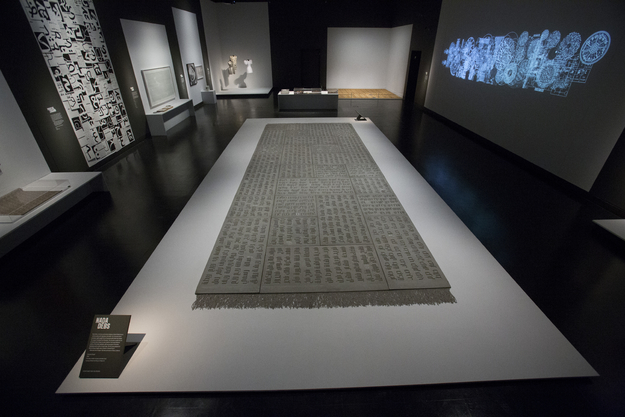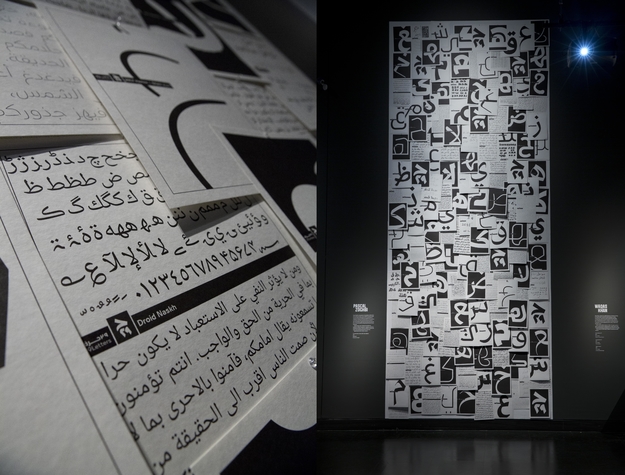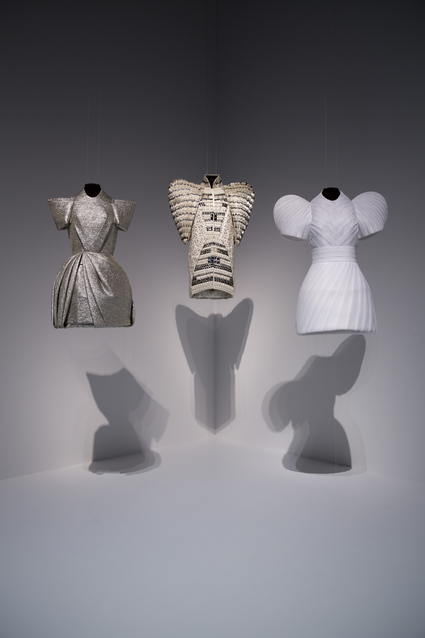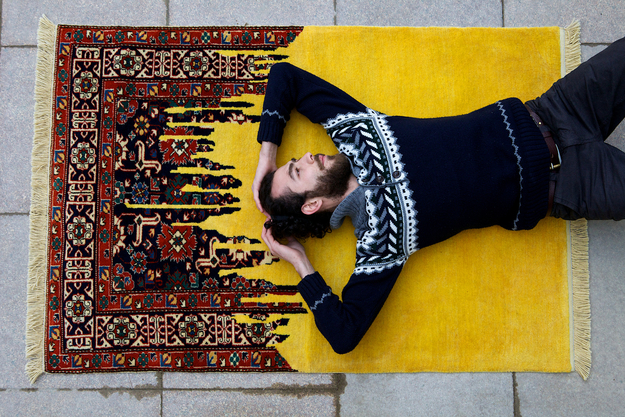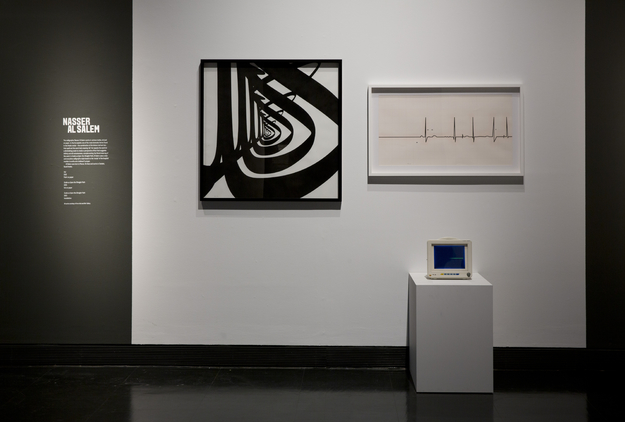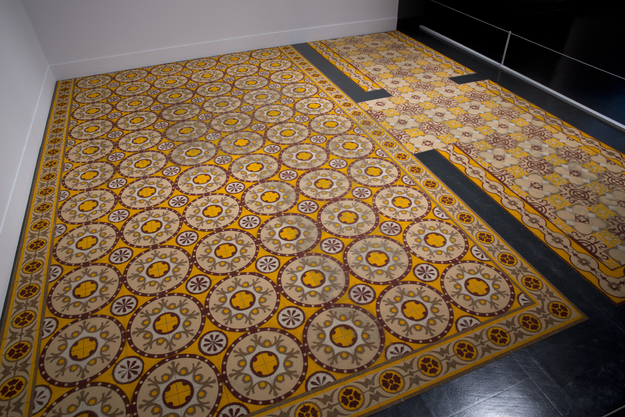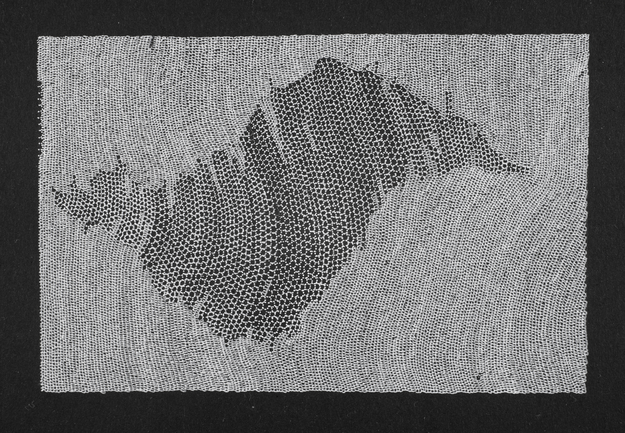The first Jameel Prize was awarded in 2009. The two yearly exhibitions of the nominees were held each time in the V&A, but on this occasion the exhibition is given far more space in one of the prime locations of the museum. It seems as if the Jameel Prize has come of age, and indeed, the show is impressive. The goal of the Jameel Prize is to stimulate further developments in the visual culture based on the Islamic aesthetic traditions. Progress is the only way for any distinct culture to stay alive. The exhibition makes clear that the Islamic visual culture has not only had an overwhelmingly impressive past, but also a bright future. That is an uplifting observation.
The extremely wealthy past of the Islamic visual culture has often been in the way of progress. The past is well known and the purpose of many exhibitions and scholarly interest. One has the impression as if everything related to the societies that ever produced all of this wealth only had a rich history to be proud of. Not a very exciting or inspiring situation for the current generations living in those societies. So much the better to see that at last the Islamic visual culture seems to attract talented young artists and designers.
The provenance and the work of the nominees gives a good insight in how once rich cultures stay alive these days. First, cultural traditions are no longer exclusively confined to the locations that once gave birth to these cultures. The global population is on the move, and so are a lot of artists. The modern (affluent) nomad lives on different places on the globe during the year. Second, more and more Western artists find their inspiration in, and adopt traditions of cultures that are not their own. Third, hardly anybody lives in a communicationally windless spot anymore. A daily bombardment of visual information from all over the globe is the reality we live in. Visual trends and facts have become quite contagious and are short-lived. Forth, proficiency of the English or the French language is still dividing the Islamic visual culture in two slightly different hemispheres.
In this year’s Jameel Prize, there is manifestly a strong rejuvenation in the various expressions of Islamic visual culture, or in a broader sense, in the cultures that make use of the Arabic script. Reviewing the work of the individual nominees confirms this view.
Pascal Zoghbi is a representative of a new generation of type designers that are finally renovating Arabic type in a fast pace after decades of stall and amateurism. Exploiting the rich calligraphic tradition with modern type technology makes these young professionals sitting on a potential treasure trove.
Nada Debbs was one of the first who makes use of the local traditional craftspeople (in Lebanon) to produce modern design rooted in the tradition. Nada designs interior products ranging from glass coasters to the huge piece of art shown at the exhibition.
The winners of the prize, the sisters Ece and Ayse Ege design, produce and sell women garments. Obviously, they also make use of the local craftspeople in Turkey where they live. As with Nada, their winning entry is closer to a piece of art than to the pret-à-porter dresses of their daily business. More and more designers are starting to produce art pieces, not so much to sell them but to proliferate their design style or their brand.
Florie Salnot is born in France. Her entry is also strongly related to local craft. In her case, the craft of the women living in the desert refugee camps in Algeria. Her work has a strong social motivation. She employes only the cheapest ingredients to let these women make visually rich personal ornaments that have strong links to their visual ornamental tradition.
Faig Ahmed would also be quite lost without the help of his local carpet weavers in Azerbaijan. He is inspired by the patterns of an ancient tradition. His designs are still realized by hand, but he makes his designs with the help of modern technology. Creating carpets and using designs from all kinds of background has become part of modern tapestry and flooring, but the designs falling into this category are practical all executed by hi-technology CNC weaving equipment, which today can easily produce one-offs.
Indian textile designer, Raul Jain has stayed closest to traditional textile designs. There can hardly be any argument against making recreations if you maintain superb quality and keep local craft at such an amazingly high level.
Multi-media artist Mounir Fatmi is born in Morocco. He likes to make use of Arabic calligraphy and traditional typographic conventions. Mounir’s entry is a graphic animation that looks like a huge machine from the Charlie Chaplin movie ‘Modern Times’ in constant motion.
Nasser Al Salem from Saudi Arabia is a young calligrapher. Without a doubt, he’s trained in the traditional way as it has been done for centuries. There is nothing wrong with tradition; stronger, superior quality work inevitably carries its traces. However, tradition is never finished. It needs additional creation to stay alive. Only dedicated following of a tradition will make it perish. Nasser understands this need and works on new creations that marry contemporary art and traditional calligraphy.
Laurent Mareschal is French, trained and educated in France. He’s in every way an artist in the Western tradition. Through his wife he came into close contact with the Middle East and found inspiration there. Following the contemporary trend, he tries to incorporate the sensation of as much senses as possible in his work. His entry is a thin ‘carpet’ made of spices strewn of the floor in multicolored patterns. It all looks and smells delicious. And no headache for future art conservators; his art piece is close to a performance act and will disappear entirely in the vacuum cleaner at the end of the show.
Waqas Khan is Pakistani and trained in the traditional practice of miniature painting. His work is related to a recent interest by visual artists in very elaborate and manually produced art pieces. Small, enduring repetitive movements are part of the creation. Working on these pieces must become close to meditating. The spectator of the result can overcome the same kind of sensation.
Geometry, ornamentation and the Arabic script are the three pillars on which the Islamic visual tradition stands. All nominees for the third Jameel Prize all fall within this definition which makes it by Western standards closer to design than to art. Yet, increasingly there are interesting artists in traditional Islamic countries working outside this definition. Let’s hope that the purpose of this prize will not become a limiting force to exclude interesting art pieces that deserve public attention.
Prizes will gain prestige when their process is transparent and the judgement is clearly motivated. The Jameel Prize could improve on both matters. The judges could conclude their work with a jury report, so the press no longer has to rely on guesswork and therefore provide at times false information. The publicly nominated judges can only select from a pool of pre-selected candidates. The process of pre-selection could equally be more transparent than it has been up until now.
